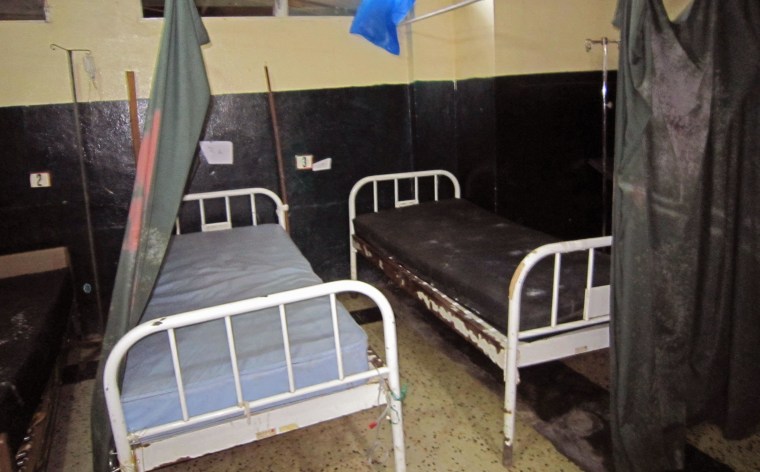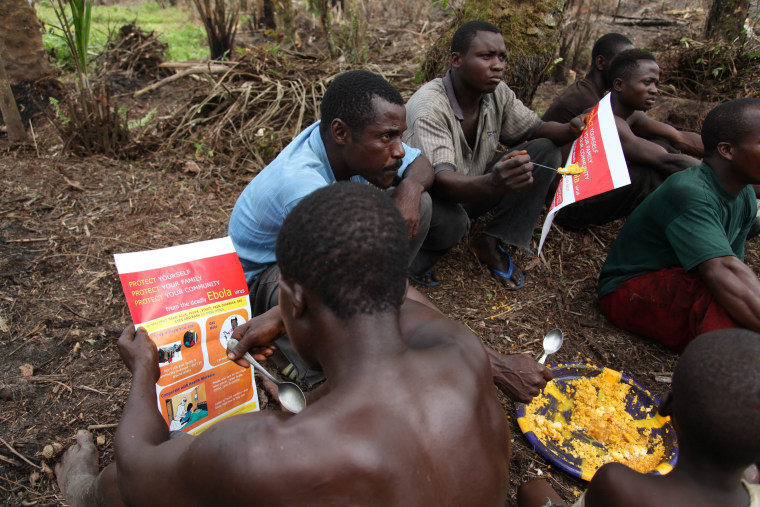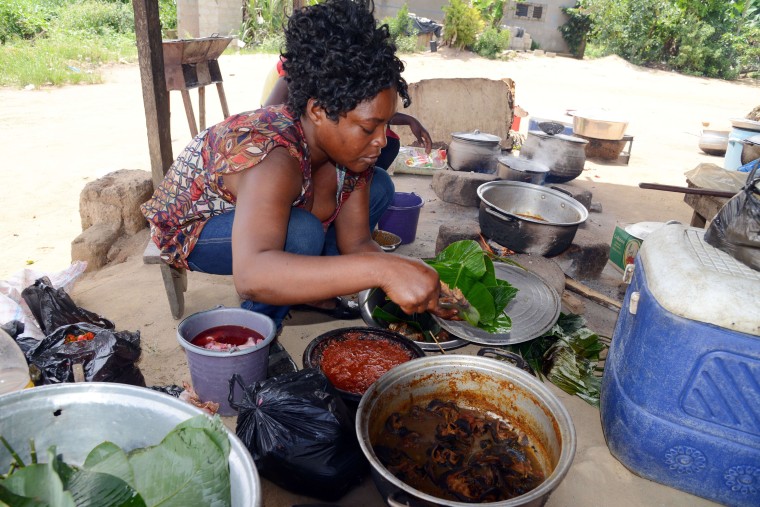An "out of control" outbreak of Ebola in West Africa that’s being called the deadliest ever is far from over and it’s likely to get worse before it gets better, experts predict.
And health workers who have been fighting the outbreak, which spans three countries and has killed more than 300 people, say they are certain many cases are going unreported as they see gruesome infections, dangerous myths and people fleeing the virus, potentially spreading it further.
“This is the tip of the iceberg,” said Robert Garry, a microbiology professor at the Tulane University School of Medicine who’s been leading relief and investigation efforts in Sierra Leone for the Viral Hemorraghic Fever Consortium.
Sign up for top Health news direct to your inbox.
Dr. Mwayabo Kazadi, from the health unit for Catholic Relief Services, agreed that many cases could go uncounted and undiagnosed in the region, where Guinea, Sierra Leone and Liberia come together.
“When you don’t have a proper health system in place, it is pretty difficult,” Kazadi said.
Garry says team members arrived in at least one village to find it deserted, and the body of an Ebola victim left unattended in a house. It’s not hard to imagine what happened, but it makes it impossible to track down people who might have been infected and get them to hospitals for what care can be provided, and to prevent them from infecting others.
A Doctors Without Borders official said Friday that the outbreak was out of control.
And the numbers make it clear this is the biggest outbreak yet of Ebola since the virus was first identified in 1976. The virus, which causes a particularly nasty form of hemorrhagic fever, has killed 337 people out of 528 infected.
“This is the biggest outbreak we have ever actually seen of Ebola,” Kazadi said. “It’s the biggest both in numbers and in terms of geography,” Garry agreed.

The biggest outbreak affected 425 people in Uganda in 2000, killing 224 of them.
Ebola is spread in bodily fluids, and the worst stages of the disease make that frighteningly easy. “People are throwing up. They have diarrhea,” Garry said. Patients can develop tiny blood hemorrhages on their skin and in their eyes.
At least a dozen women were infected by a healer, probably as they washed and kissed her body when she died of Ebola and they were preparing her for her funeral. The case illustrates just why this outbreak is so difficult to fight.
The healer, who used snakes as part of her practice, made some frightening and dire predictions from her death bed. “She said she was going to release the snakes and said anybody who saw the snakes would die the way she did,” Garry said.
This frightened some of the people in her village, and they attacked some volunteers from Garry’s team, throwing rocks at their vehicle.

Garry's back in the U.S. for a few days trying to scrape up funding to buy protective gear for health care workers. The WHO and other groups are also providing such gear, but it's getting spread thin.
If workers start re-using gloves, gowns or goggles, they could end up spreading the virus. There's no cure and no vaccine, and the outbreak is killing 60 percent of its victims.
Volunteers are trying to get the word out about how the virus is spread, but it’s tricky getting the message right.
“People have been resisting the idea that it was just not some type of curse or spirit. Or that it’s people trying to keep them from eating bush meat,” Garry said.
One suspicion was that people initially got Ebola by eating bush meat — apes, monkeys, bats, and rodents slaughtered for food. That’s how experts now believe the AIDS virus first started circulating among people and it’s possible Ebola originated there, too.
But now it’s spread mostly person-to-person, Garry said. “The only thing that people hear is ‘Don’t eat bushmeat.’ It just gets people riled up. It’s not a useful message.”

The porous borders in the area make things difficult, also. People, many of them in the same ethnic groups, pass freely from one country to another.
Genetic testing makes it clear this particular Ebola outbreak is being caused by a local strain that arose in West Africa. Ebola had only been seen in central Africa before, but the discovery suggests that the virus had been circulating undetected before. Hemorrhagic fevers are common in Africa — Garry’s team was originally in Sierra Leone to study and fight another virus, one that causes Lassa fever.
“We’re probably finding (Ebola) now because we are looking for it,” he said.
Bats are another suspected source. Bats carry hundreds of viruses and carry antibodies to Ebola, which suggests they can be infected. Bat meat could be one source, but so could bat spit.
“It’s mango season. The bats are eating the mangoes and the people are eating the mangoes,” Garry said.
It’s not an unusual idea. Researchers tracking Middle East Respiratory Syndrome virus or MERS are also checking the theory that fruit-eating bats may spread that virus in their saliva.